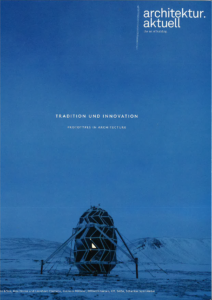Research for Development – Chances for Ethiopia
Public lecture by Dirk E. Hebel at the Ethiopian Institute of Architecture, Building Construction, and City Development EiABC, Addis Abba, Ethiopia on January 23rd, 2014. Steel-reinforced concrete is the most common building material in the world, and developing countries use close to 90 percent of the cement and 80 percent of the steel consumed by the global construction sector. However, very few developing countries have the ability or resources to produce their own steel or cement, forcing them into an exploitative import-relationship with the developed world, as the case of Ethiopia shows very clearly. Out of 54 African nations, only two are producing steel. The other 52 countries including Ethiopia all compete in the global marketplace for this ever-more-expensive, seemingly irreplaceable material. But steel is not irreplaceable. There’s a material alternative that grows in the tropical zone of our planet, an area that coincides closely with the developing world: bamboo. Bamboo is a highly renewable and eco-friendly material. It grows much faster than wood, is usually available in great quantities, and is easy to obtain. It is also known for its unrivalled capacity to capture carbon and could therefore play an important role in reducing carbon emissions worldwide – another advantage for developing nations in light of the trade in carbon emission certificates. Simply from an economic perspective, most developing nations should be interested in the material. It could strengthen local value chains, bring jobs and trade to those countries, and lower their dependency on international markets. The research conducted under the Professorship of Dirk E. Hebel at the Future Cities Laboratory in Singapore entails investigating the potential to build up a industrial production of a renewable, sustainable and local available material, which could be the start of a green industrial alternative in Ethiopia.





























